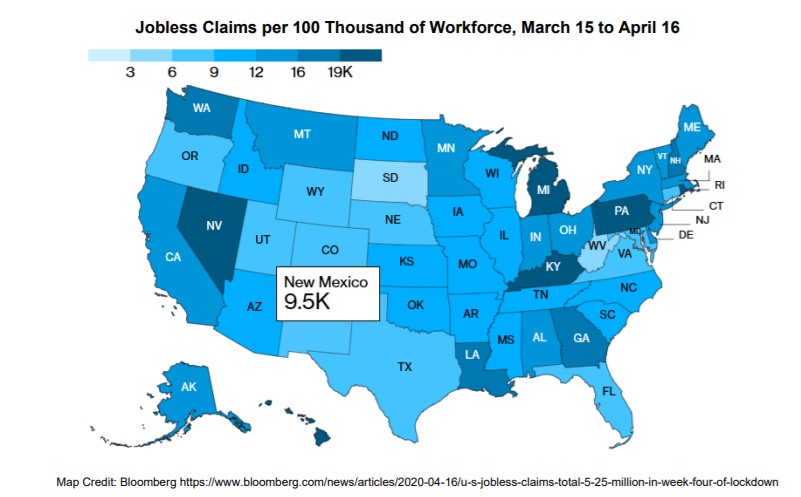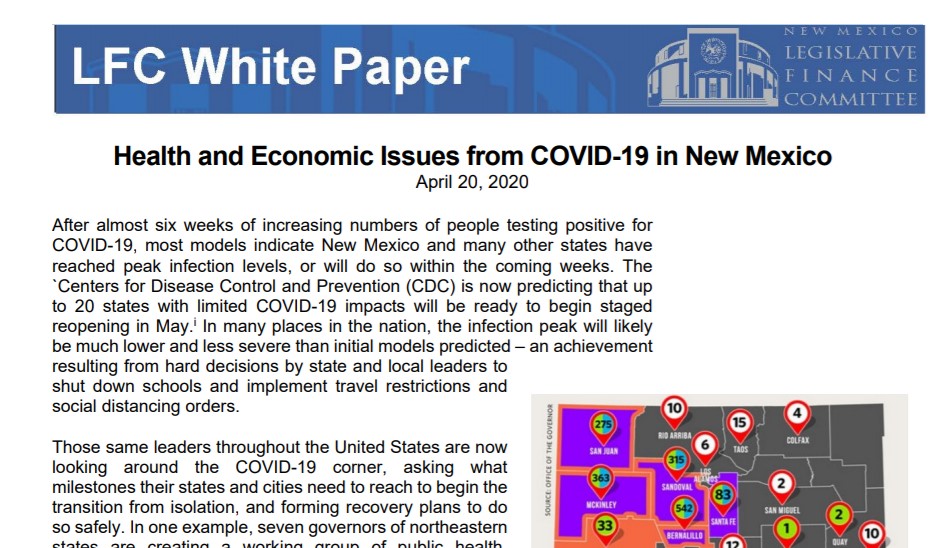Last week, New Mexico’s Legislative Finance Committee issued a white paper covering both the current status of the pandemic in New Mexico and the conditions necessary to begin the gradual reopening of the state’s economy. Perhaps the most comprehensive review of the state’s current situation and outlook for the future made publicly available so far, the white paper gives a sense of the considerations policy makers are focused on as they attempt to safely navigate the coming weeks and months.
The LFC notes that the most significant outbreak has been centered in a handful of counties primarily in the Northwestern part of the state, and that the statewide infection curve appears to be flattening — and even declining in the most populous counties. The analysts note that New Mexico has a per capita testing rate among the highest in the nation, and that projections for current strain on hospitals continue to decline.
The paper then outlines a set of “achievements” necessary to end the current set of restrictions; these include:
- a steady decline in new case numbers;
- ensuring that the state has adequate hospital capacity to handle surges in acute cases; and
- the capability to execute testing and contact tracing aggressively to tamp down new outbreaks without returning to shutdowns.

While cautioning that “until a vaccine or effective treatment is in place, precautionary measures such as those outlined by the CDC will likely accompany any reopening of operations”, the LFC describes a series of “lower-risk avenues” to re-opening. These include identifying low-risk regions and operations where activity can resume with precautions like social distancing and masks in place, instituting regular cleaning procedures, and adhering to strong protections for at-risk populations. The report points to re-opening of schools and child care centers as a key step in freeing up the workforce, and expresses some concern that tourism and large events will continue to be impacted for some time.
Finally, the report examines how other states are approaching this process in an environment where the federal government has asked states to determine their own paths. While New Mexico has not joined one of the multi-state regional coalitions that have been established over recent weeks, it can still use the recommendations and outcomes from these state to help guide the evolution of its policy response.




